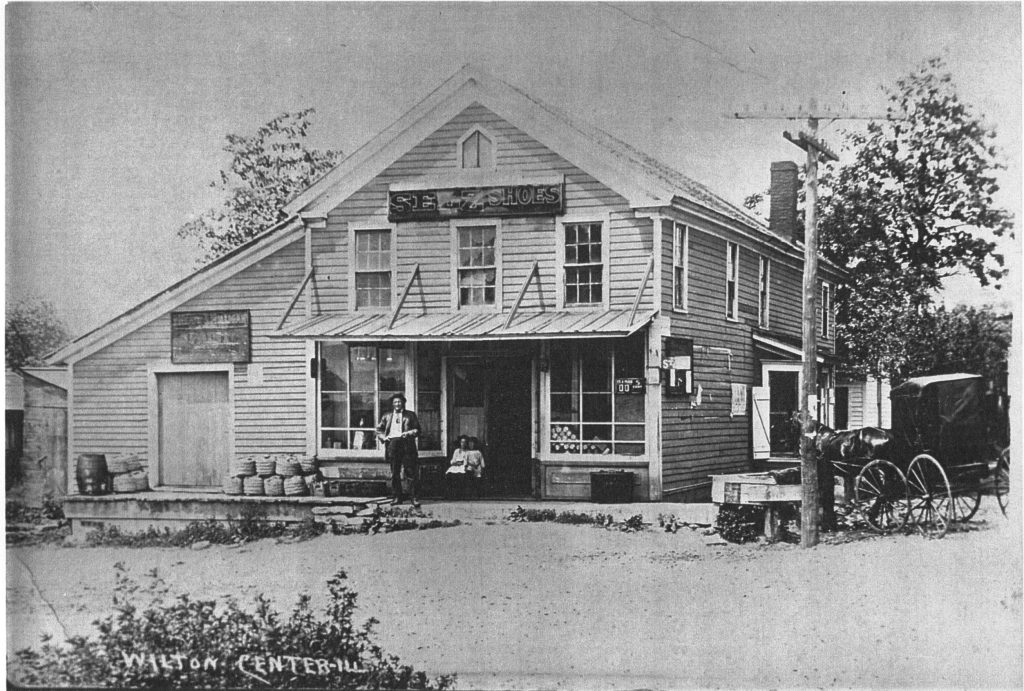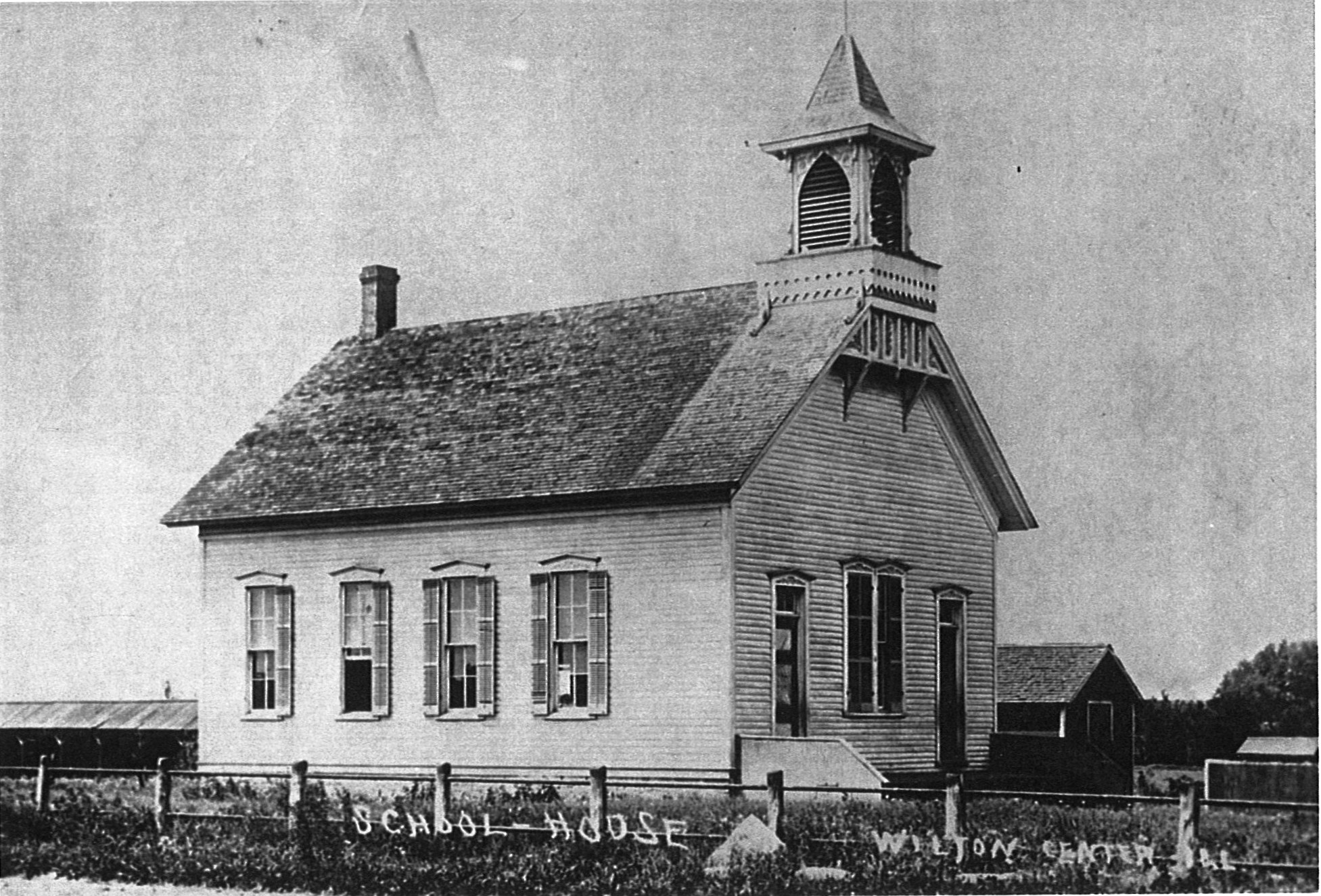Our Rural Heritage: Whatever became of Twelve Mile Grove?

By Sandy Vasko
Today we look at the area known as Twelve Mile Grove, named such because it is twelve miles from Joliet.
What! You never heard of it? Well certainly you are not alone. Perhaps you might have heard of its modern name, Wilton Center. Set the “way back” machine for the first half of the 19th century and prepare to see Indians!
Just east of Wilmington, in Wilton Township, now known as Wilton Center, lay one of the most interesting places in Will County. It was the location of two of the four Indian Reservations that at one time were located in Will County. The area was heavily wooded with good streams flowing through and plenty of fish and game. It became a favorite of the Native Americans.
In the treaty of Oct. 20, 1832, secured in Chicago immediately after the Black Hawk War, reservations were given out to the most influential of the tribal leaders. One of these was Joseph Laughton, son of David Laughton and his wife Waish-Kee-Shaw, a Pottawatomie woman. Another was given to Se-natch-e-wine, his cousin. The reserves were located next to one another along Forked Creek.
However, these reserves did not last long. In 1836, under the Federal Indian Removal Act, all Native Americans were forced off their land and moved to reservations out west.
The Pottawatomie were forcibly removed to reservations in Kansas and Nebraska. Recently, a group of Pottawatomi visited the Will County museum. When shown an 1862 map, which still showed the Indian Reserves, he pointed to Se-natch-e-wine reserve and proudly said, “He was my fifth great-grandfather!” I felt proud to have met him, and still ashamed for the treatment he received.
The area of the reserves had long been used by Native Americans of several tribes. When white men first entered the area, a final resting place for one of them could still be seen. The man, presumably a chief, was set above ground in a sitting position. All around him were placed everything he would need in the next life: kettles, bows and arrows, pipes for smoking, etc. Then a fence was built around him to keep predators out. This grave was a landmark for many years until everything simply decayed away.
In 1840, Laughton and Se-natch-e-wine deeded over their reserves to James Kibbin and the Nelson family. However, they both continued to visit the grove long after white men had put up fences. They simply cut through the fences and proceeded on to what they thought was still their land. While the concept of territory, i.e. land that was controlled by various tribes was accepted, the concept of land ownership did not exist among Native Americans at that time.
One of the earliest and most notorious of the white settlers in this area was nick-named “Old Put.” His real name has been lost to history. He robbed and stole from every passer-by and from his neighbors as well. The community finally had enough. They simply tarred and feathered him, then shaved his head. He was let go, never to be seen again.
In 1854, an anonymous writer named Veritas visited Twelve Mile Grove and wrote of what he saw:
“Very few years have passed away since this Grove was transferred from the hands of its aboriginal possessors to the whites; but short as has been the time of its occupancy by white inhabitants, it has extensively exhibited the intelligence and enterprise of its present proprietors. The Grove is already surrounded by a numerous population.
“And while the acquisition of property is not overlooked by the settlers here, a due regard is paid to the educational interests of the children. Two convenient school houses, of respectable size and appearance, have been erected; and we have no hesitation in averring that country neighborhoods are seldom so well provided with educational facilities as Twelve Mile Grove.
“This Grove is literally encompassed by railroads. It is situated almost equi-distant between the Illinois Central and Mississippi railroads; Twelve Mile Grove must come in for its per centum of profit.
“We have heretofore had occasion to notice the intelligence and enterprise of the members of this community. We would now avert to their morality, and to their regard to the obligations of Christianity. Every Sabbath, with hardly an exception, finds a good portion of the population at the house of prayer engaged in waiting devoutly upon the ministrations of the pulpit. In respect to its general morality, Twelve Mile Grove humbly and respectfully challenges comparison with any other neighboring community.
“In connection with this subject, we would remark, that Twelve Mile Grove possesses a very healthy location. The bilious diseases, peculiar to the west, which shake the system (here referring to malaria), and paralyze its energies, are here almost unknown. To the emigrant, therefore, who is seeking in our prairie for a permanent and happy home – a home which embodies beauty of scenery, fertility of soil, purity of water, advantages of schools, and exemption from malignant disease, we would say, ‘Go to twelve Mile Grove.’
“This given in sincerity; for we have neither sympathy nor fellowship with that indiscriminate system of puffing (exaggerating) so widely prevalent in the west. We state what we conceive to be truth, and the better way for our readers to establish either the falsity or truthfulness of our statements, is to visit the Grove, and form their own conclusions.”
Yes, Twelve Mile Grove had everything it needed to become a thriving community, but it just never happened, for whatever reason. The small crossroad community of Wilton did flourish for a while, but it has now almost disappeared.

The Wilton Center one-room schoolhouse